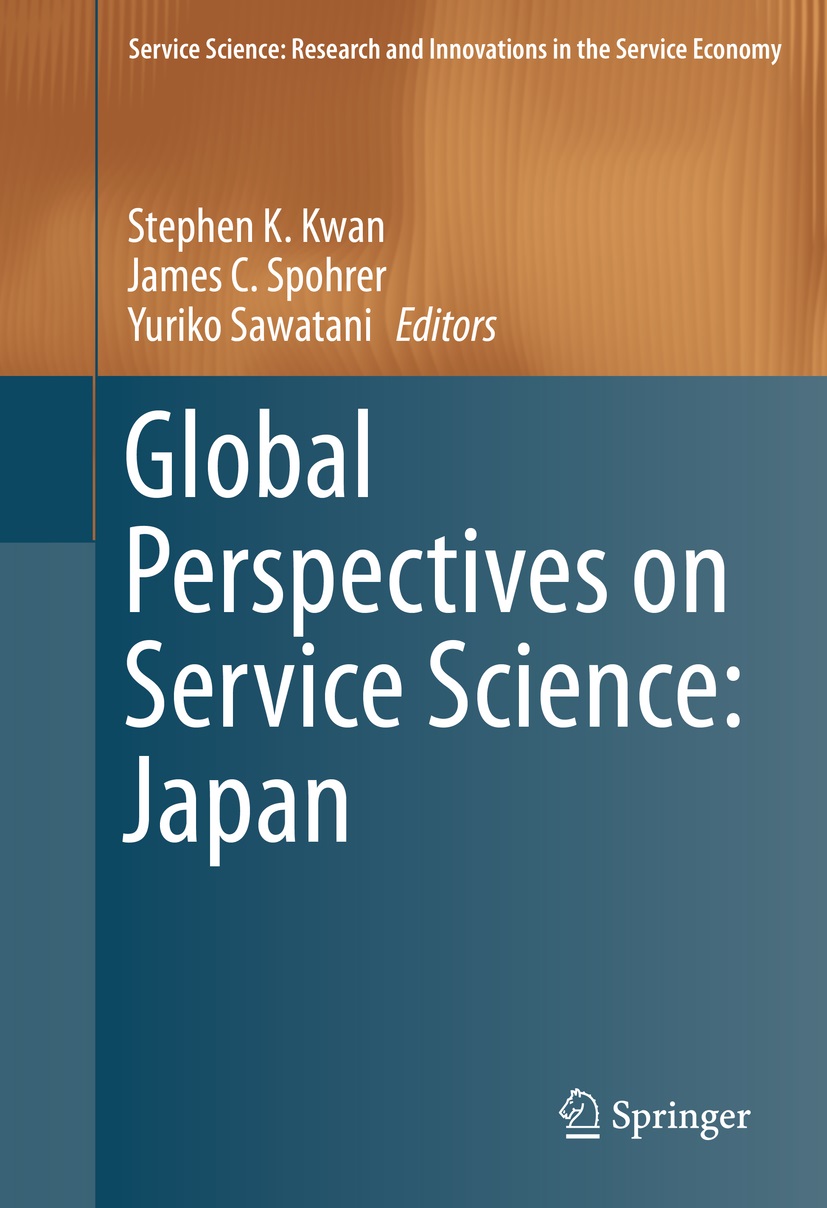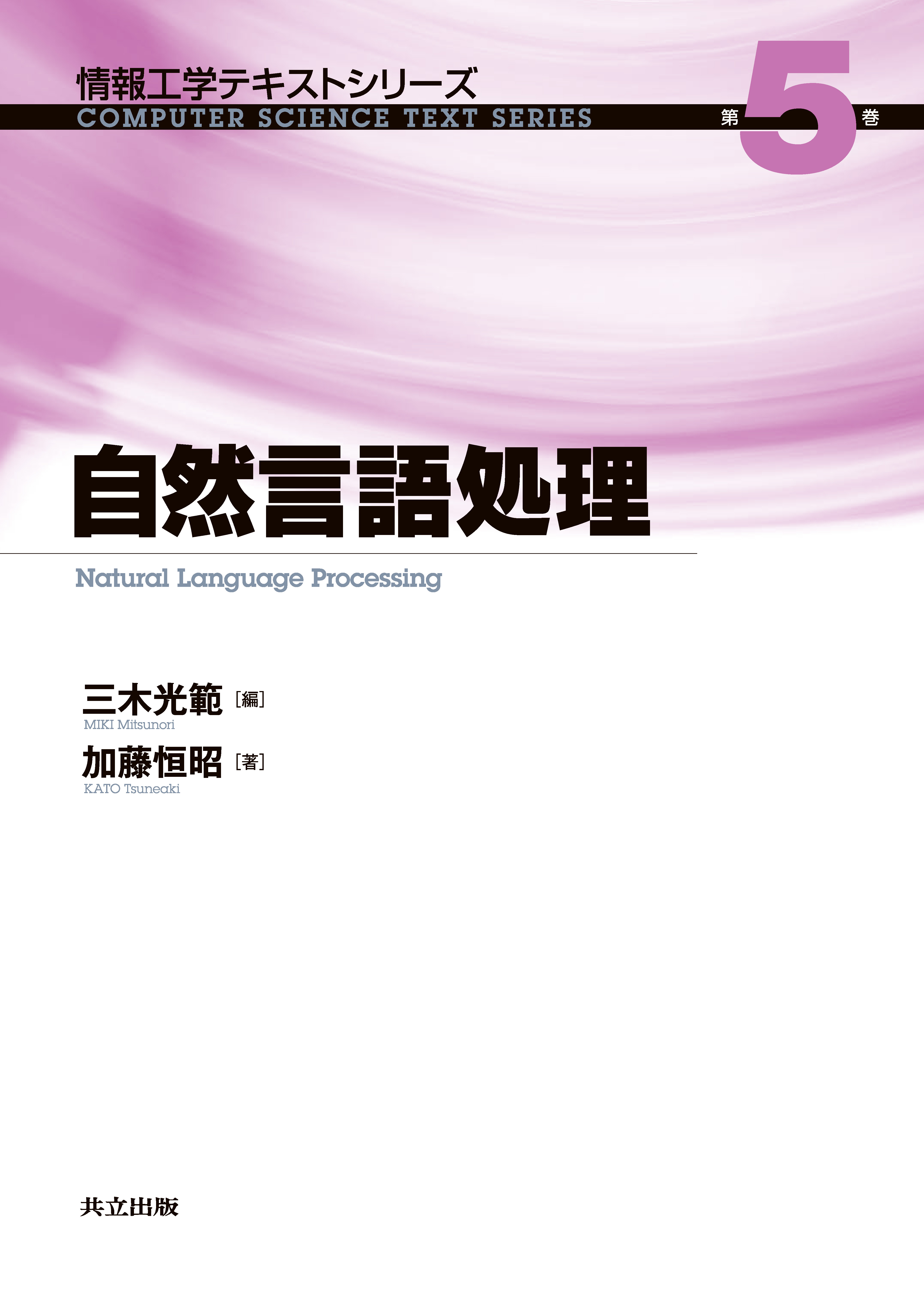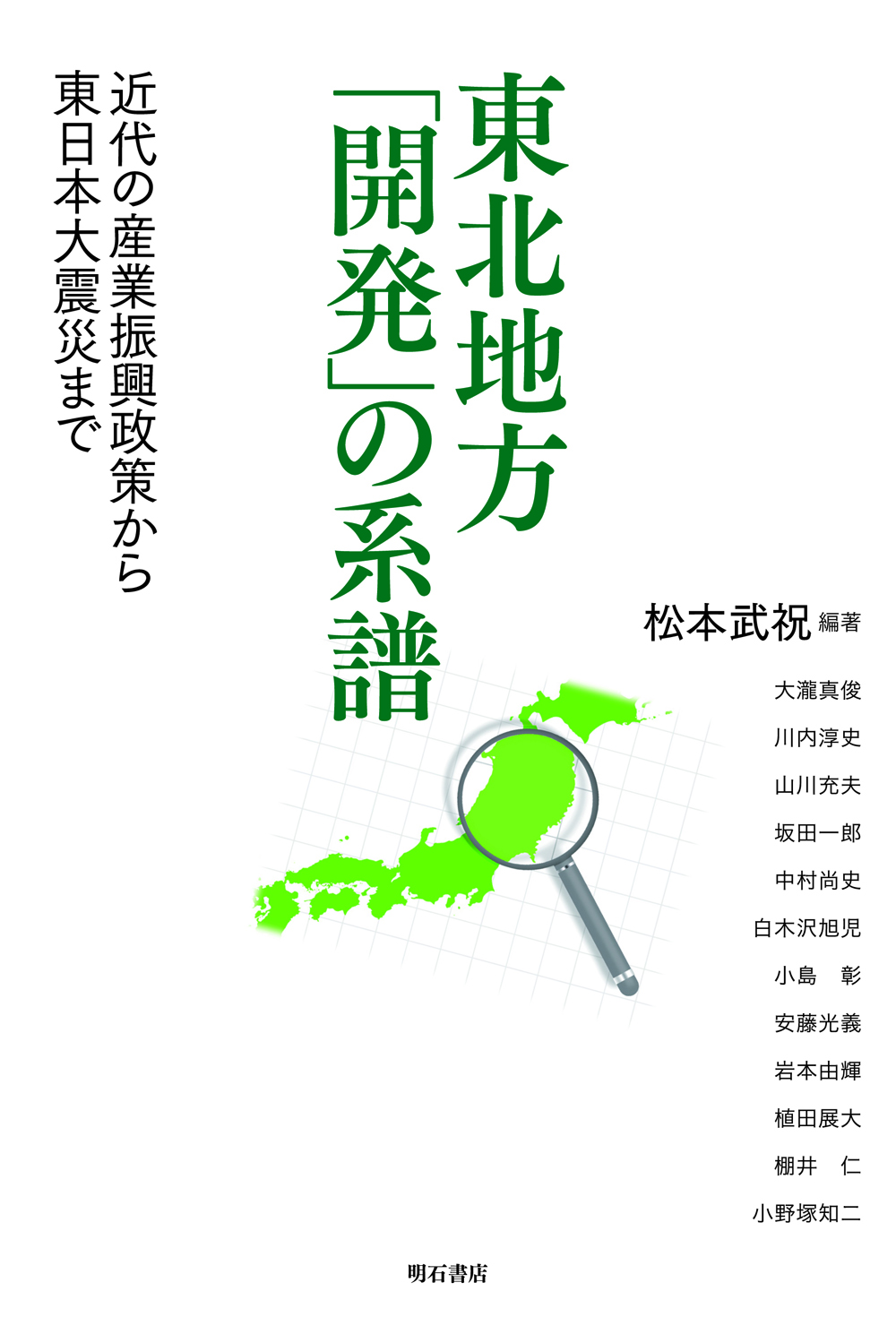
Title
Service Science: Research and Innovations in the Service Economy “Knowledge structuring tools for decision support service: A overview of citation-based approach” (pages 261-276 of Global Perspectives on Service Science: Japan / Stephen K. Kwan, James C. Spohrer, Yuriko Sawatani [Eds.])
Size
349ページ、ハードカバー
Language
English
Released
2016
ISBN
9781493935925
Published by
Springer-Verlag New York
Book Info
See Book Availability at Library
Japanese Page
Business and governmental organizations need to make strategic decisions swiftly but judiciously. To this end, they rely on findings derived from various data sources around the world to guide their decision-making processes. For example, if an organization is considering how to use an innovative form of technology, or what science/technology strategy it should adopt, it will need to gather information about the fields of research that are attracting the scientific community’s attention, including who the key actors (such as research institutes) are. It will also need to verify what stage its rivals are at in relation to the technology it is developing, and it needs to ascertain any complementary technologies. However, much of this information ultimately goes unused, even if it is useful and accessible. One reason is that decision makers become overwhelmed by the sheer volume of information. A case in point is nanocarbon (a type of material that has attracted attention for its potential to solve various social problems); while there were fewer than ten thousand articles on nanocarbon in around 2000, there are now over forty thousand. Business and governmental organizations have so far followed an expert-based approach, in which they rely on experts to analyze the data and derive the key findings. The Delphi method is a typical example of this approach. However, the problem with this approach is that the volume of data becomes too vast for humans to process fully.
This book proposes a solution to the problem: knowledge structuring. Knowledge structuring uses a computer-based approach to expedite the decision-making process. The method exploits the citations found in articles and patents. As citations represent the purpose of citing the work, they provide in-depth information about the connections between the content. Knowledge structuring links these bottom-up indicators to create a citation network in which the articles and patents are nodes. This network is then analyzed in two steps. First, the clustering method is used to form clusters of articles and patents. Experts can then use the automatically extracted data to define the key information in each cluster. As a result of this step, what once consisted of hundreds of thousands of papers is reduced to only thousands. The second step involves analyzing the content of the papers in each cluster using Natural Language Processing and similar methods. One can then consult the automatically generated information to pinpoint the key researchers or research organizations in each cluster (each representing a field of knowledge), including which fields of knowledge are growing and which are on the decline. Finally, the heat map method is used to determine the strength of the connections between the fields of knowledge (as voluntarily indicated by the authors concerned). To take an academically topical subject as an example, suppose an organization has developed a robotic technology and it wants to find out the potential applications of this technology in Japan’s super-aging society; this organization could use a heat map to ascertain the relevance of its robotic technology for each of the particular issues related to the super-aging society phenomenon.
The authors have now established the Academic Landscape System. The Academic Landscape System is an online system that combines knowledge structuring with a model that uses machine learning to predict which papers will win acclaim in the future. The system is currently in use at the University of Tokyo. With broader use, it should become an exemplary example of how to combine a computer-based approach with expert-based approaches.
(Written by Ichiro Sakata, Professor, School of Engineering / 2018)
Table of Contents
1 Introduction
Jim Spohrer, Stephen K. Kwan, and Yuriko Sawatani
Part II Foundations
2 Service Innovation in Japan and the Service-Dominant Logic
Teruyasu Murakami
3 Context Management Approach to Value Co-creation: Toward Dynamic Process Model of Customer as Value Co-creator
Yoshinori Fujikawa, Satoshi Akutsu, and Joji Ono
4 Human Behavior Observation for Service Science
Haruhito Matsunami, Aya Kubosumi, and Kanako Matsumoto
Part III Methods
5 Community-Based Participatory Service Engineering: Case Studies and Technologies
Yoichi Motomura, Takeshi Kurata, and Yoshinobu Yamamoto
6 Methodology of Workshop-Based Innovative System Design Grounded in Systems Engineering and Design Thinking
Toshiyuki Yasui, Seiko Shirasaka, and Takashi Maeno
7 Wants Chain Analysis
Takashi Maeno, Seiko Shirasaka, and Toshiyuki Yasui
8 Interactive Service Design Method: Application to Aircraft Operations at Haneda Airport
Kazuo Furuta, Takanori Kaneko, Taro Kanno, Shigeki Yoshihara, and Takamichi Mase and Takamichi Mase
Part IV Engineering and Design
9 Service Design in Tourism: Encouraging a Cooperative Relationship Between Professional Design and Non-professional Design
Tatsunori Hara, Kazuhiro Aoyama, Yohei Kurata, and Naoto Yabe
10 Value Co-creation Process and Value Orchestration Platform
Kyoichi Kijima and Yusuke Arai
Part V Technology
11 Formalizing Expert Knowledge Through Machine Learning
Tsuyoshi Idé
12 Agent-Based Simulation for Service Science
Hideyuki Mizuta
13 Temporal–Spatial Collaboration Support for Nursing and Caregiving Services
Naoshi Uchihira, Kentaro Torii, Tetsuro Chino, Kunihiko Hiraishi, Sunseong Choe, Yuji Hirabayashi, and Taro Sugihara
14 Quest for Equation of Life: Scientific Constraints on How We Spend Our Time
Kazuo Yano
Part VI Industry
15 The Spread of Services and Consumer Value Co-Creation
Makoto Usui
16 Sustainability and Scalability in Japanese Creative Services
Yoshinori Hara, Yoshikazu Maegawa, and Yutaka Yamauchi
17 Knowledge Structuring Tools for Decision Support Service: An Overview of Citation-Based Approach
Ichiro Sakata
1.Introduction
2.Methodology of Academic Landscape
3.Application to the decision support service
4.Conclusion
18 R&D Servitization in the Manufacturing Industry
Yuriko Sawatani and Yuko Fujigaki
Part VII Education
19 MANGA-Case Training for Global Service Science
Akiko Orita, Atsushi Yoshikawa, and Takao Terano
20 Creation of Service Science Curriculum for Customer-Oriented Business Innovation
Hideaki Takagi, Yukihiko Okada, Akiko Yoshise,and Maiko Shigeno
Part VIII Future
21 Service Engineering Road Map of Ministry of Economy Trade and Industry in Japan
Takafumi Kinoshita, Kazuaki Ibe, Mitsuru Kawamoto, Kitayoshi Tsumita, and Yasuhiro Maeda



 Find a book
Find a book



